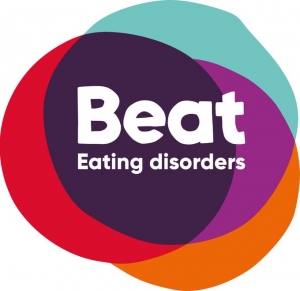This week is National Eating Disorder Awareness Week! Did you know that eating disorders are among the deadliest mental illnesses second only to opioid overdose? 10,200 deaths each year are the direct result of an eating disorder (1).
Some common myths surrounding eating disorders are:
- “People who have eating disorders must be underweight”. Eating disorders look different for everybody and present themselves in many different ways. Less than 6% of people with eating disorders are actually diagnosed as being underweight (2). Just because someone doesn’t look physically sick, doesn’t mean they aren’t suffering.
- “Only women can have eating disorders”. Men can have eating disorders, too, and the number of cases has increased in recent years. From 1999 to 2009 the number of men hospitalized for eating disorder-related causes increased by 53% (4). Males account for 25% of individuals with anorexia or bulimia eating disorders. Gay men represent almost half of men with eating disorders and are more likely to fast, vomit, or take laxatives or diet pills to control their weight (5).
- “Eating disorders are a choice”. Eating disorders are serious mental illnesses, not lifestyle choices.
Click here to fill out our Eating Disorder Self-Assessment checklist.
If you feel like you or someone you know is suffering from an eating disorder, we are here to help! Our staff offers a unique holistic and integrative approach to eating disorder treatment using psychological therapy and a functional medicine approach to regain health.
Call 201-448-6678 to make an appointment or click here to enter your information and learn more about how our team can help!
By Taylor Groff, MS Functional Nutritionist
References:
- Deloitte Access Economics. The Social and Economic Cost of Eating Disorders in the United States of America: A Report for the Strategic Training Initiative for the Prevention of Eating Disorders and the Academy for Eating Disorders.June 2020. Available at: https://www.hsph.harvard.edu/striped/report-economic-costs-of-eating-disorders/.
- Arcelus, Jon et al. “Mortality rates in patients with anorexia nervosa and other eating disorders. A meta-analysis of 36 studies.” Archives of general psychiatry68,7 (2011): 724-31. https://doi.org/10.1001/archgenpsychiatry.2011.74
- Zhao, Y., Encinosa, W. Update on Hospitalizations for Eating Disorders, 1999 to 2009. HCUP Statistical Brief #120. September 2011. Agency for Healthcare Research and Quality, Rockville, MD. http://www.hcup-us.ahrq.gov/reports/statbriefs/sb120.pdf
- Hudson, J., Hiripi, E., Pope, H., & Kessler, R. (2007) “The prevalence and correlates of eating disorders in the national comorbidity survey replication.” Biological Psychiatry, 61, 348–358.
- Eating Disorders in LGBTQ+ Populations. (2018, February 21). Retrieved February 22, 2021, from https://www.nationaleatingdisorders.org/learn/general-information/lgbtq


